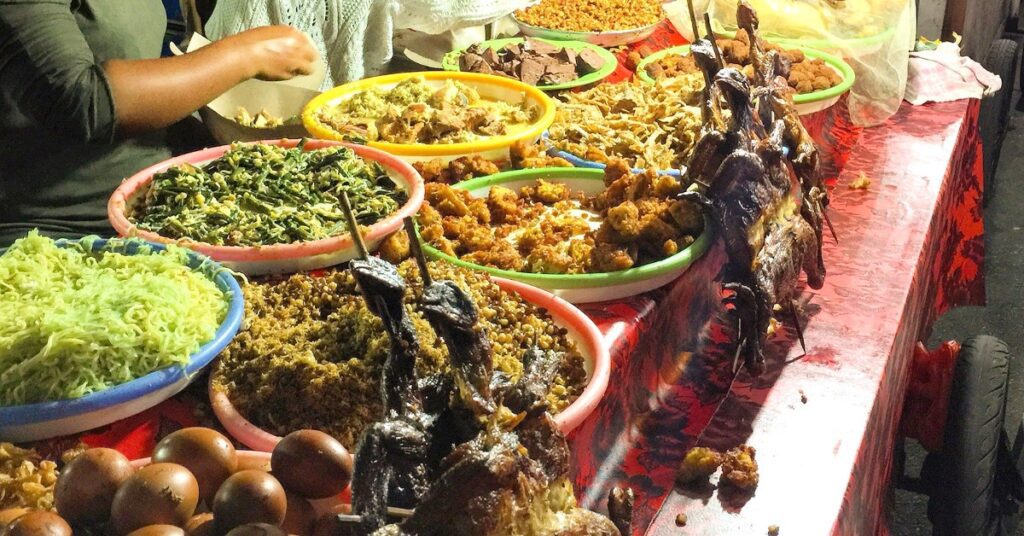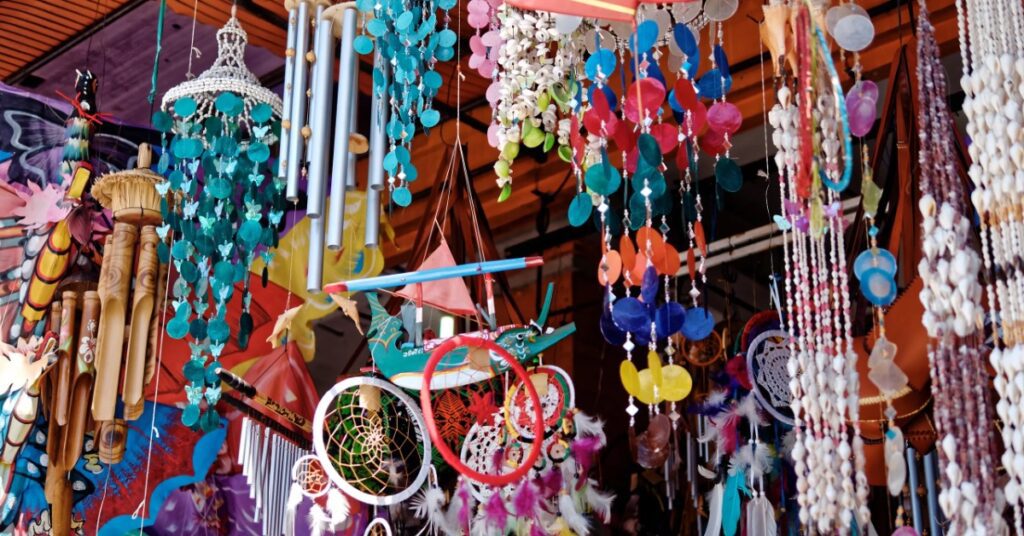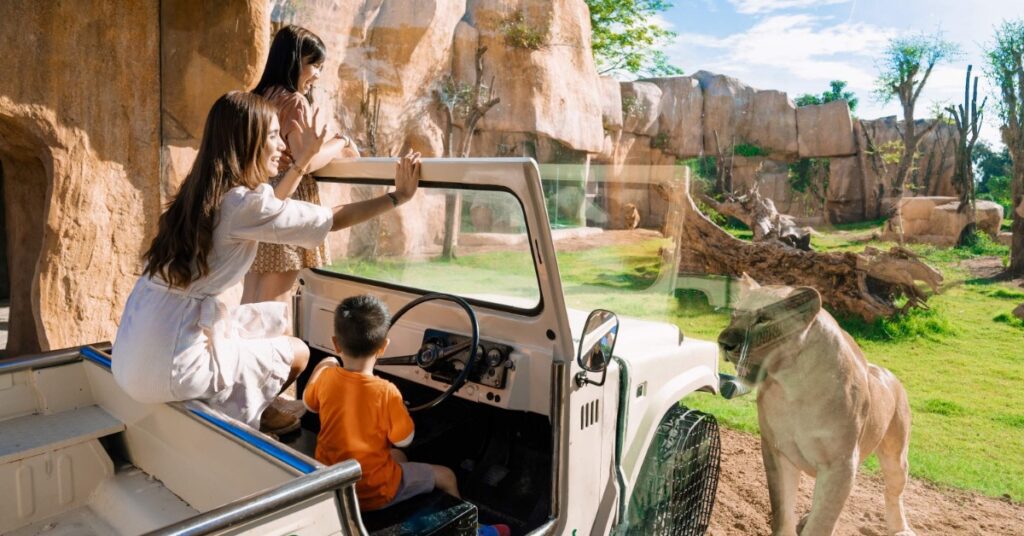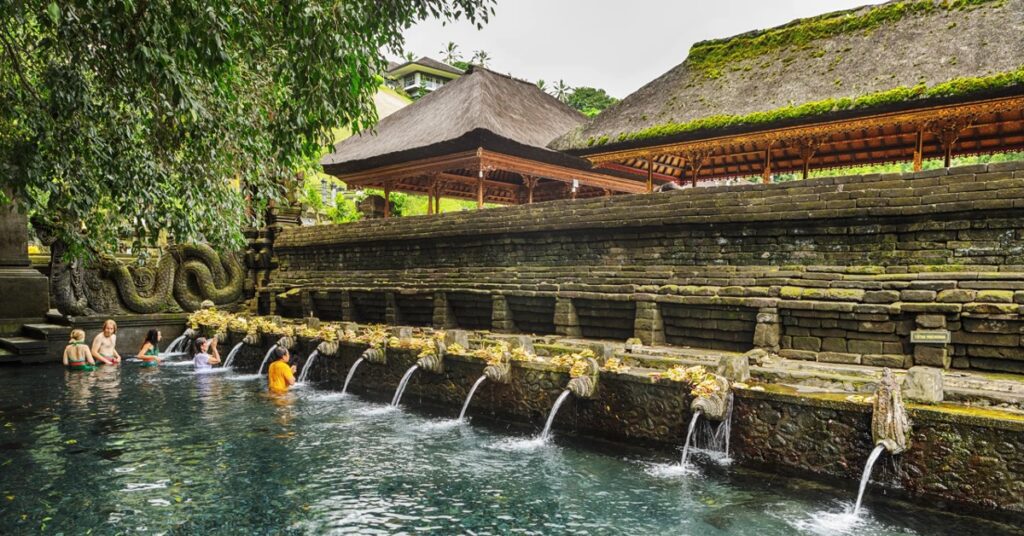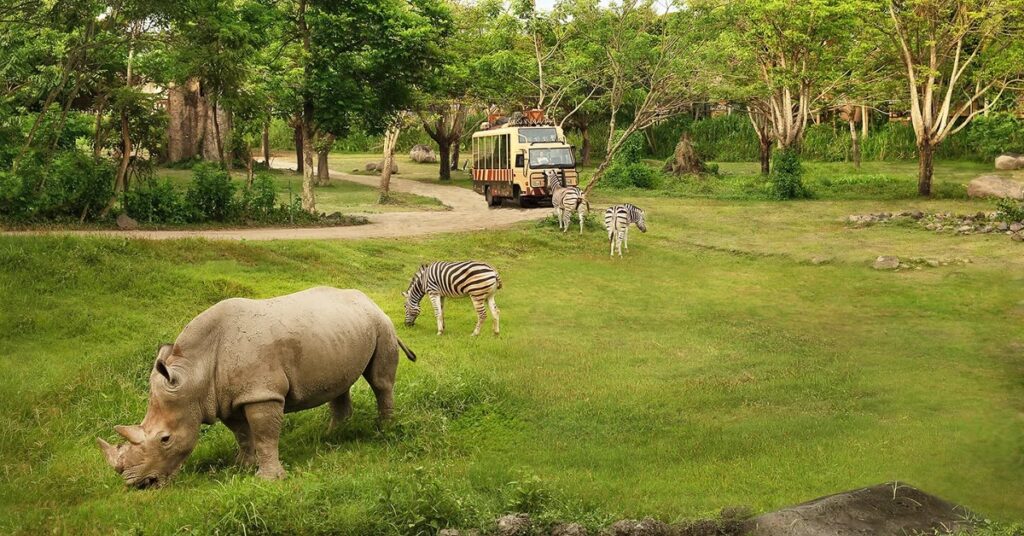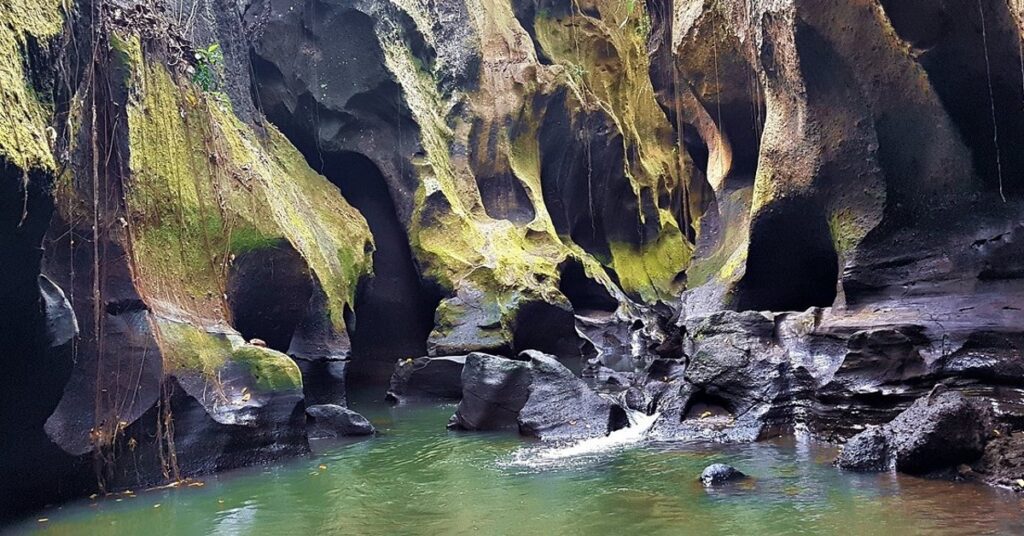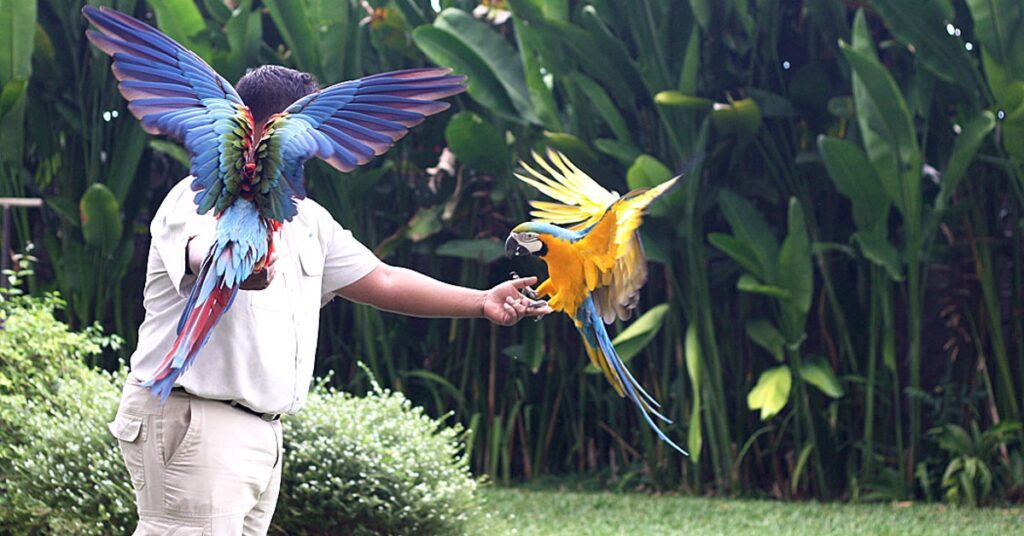Gianyar Regency is a regency (kabupaten) of the Indonesian province of Bali, on the Indonesian island of Bali.
It covers 368.0 km2 and has a population of 515,344 according to the 2020 Census, making it Bali’s second most densely populated district (after Badung).
Gianyar serves as its regency seat. According to the April 2011 civil registry survey, there were 480,447 people, with 469,929 of them being Hindu.
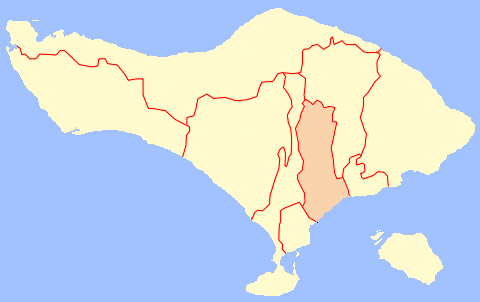
Bali Treetop Adventure Park
Gianyar Night Market
Sukawati Art Market
Bali Reptile Park
Bali Zoo
Tirta Empul Temple
Bali Safari Marine Park
Beji Guwang Hidden Canyon
Bali Bird Park
Districts of Gianyar
| Name | Area in km2 | Population Census 2020 | Number of villages |
|---|---|---|---|
| Sukawati | 55.02 | 119,975 | 12 |
| Blahbatuh | 39.70 | 74,093 | 9 |
| Gianyar (town) | 50.59 | 101,444 | 17 |
| Tampaksiring | 42.63 | 50,864 | 8 |
| Ubud | 42.38 | 71,568 | 8 |
| Tegallalang | 61.80 | 52,257 | 7 |
| Payangan | 75.88 | 45,143 | 9 |
Condominiums and apartments are Banned.
Although Gianyar Regency, Badung Regency, and Denpasar City are the three wealthiest regions in Bali, with most of their wealth derived from tourism, Gianyar Regency has officially prohibited the construction of new and increasingly popular condominium hotels (“condotels”) and apartment facilities since February 2012. Unlike in Badung and Denpasar, where condotels and flats continue to be in high demand from tourist developers and investors, Gianyar Regency wishes to preserve local entrepreneurs.
Activities in Gianyar
Gianyar is ideal for experiencing Bali’s spectacular natural environment and rich cultural heritage. The region is also great for appreciating traditional Balinese arts, such as visiting an art gallery, watching a mesmerizing dance performance, or simply watching a colourful procession down the street.
Gianyar Spas
Gianyar is ideal for immersing yourself in Bali’s healing traditions, with various spas to delight your senses. Ubud and its surrounds, in particular, provide options for every budget, ranging from down-home local parlours to lavish luxury spas. But, of course, you can also get a massage or other spa treatments in the privacy of your villa for the ultimate luxury. Many larger luxury villas even have separate spa rooms created explicitly for this purpose.
Keramas Beach
In recent years, Keramas Beach near Blahbatuh has hosted international surfing contests despite having poor infrastructure, such as uneven roads and no parking lots. Keramas Beach was on the calendar of the Association of Surfing Professionals (ASP2013 ) ‘s Men’s World Championship Tour as the Oakley Bali Pro from June 18-29, 2013.
Shopping
Surprisingly, Gianyar is also an excellent place to go for some retail therapy. Gianyar is a major centre for art and handicraft; thus, it’s a perfect spot for souvenirs. The Sukawati Art Market is one of the best places to get unusual treasures to take home with you. Of course, the prices at the local marketplaces must be negotiated, so bring your A-game!
Activities and Tours
Ubud, located in central Gianyar, is home to some of the island’s most famous sites, including the Sacred Monkey Forest Sanctuary, the Tegalalang rice fields, and Goa Gajah Temple. In addition, Pura Tirta Empul is a magnificent water temple in the north where visitors can participate in a cleansing ceremony with the locals.
Gianyar is well-known for its natural beauty, in addition to its art and culture. The Tegalalang rice terraces provide some of the most iconic views on the island, but merely driving around the area will reveal gorgeous rice paddies (minus the tourists). Gianyar is also home to some of the most beautiful natural waterfalls in the world, including Tegenungan, Tukad Cepung, and Goa Rang Reng.
In Gianyar, you can also get your heart racing. Rafting on white water is a popular activity in the area, with most tours taking place along the Ayung River. This is a picturesque and energising way to experience the lush tropical splendour of Bali. Exploring the neighbourhood by bicycle is another excellent option. While renting a bike and going on your own is technically feasible, we recommend taking a guided tour to get the most out of the experience. Having an experienced local guide take you through the most scenic routes and attractive Balinese villages will give you a deeper understanding of island life.
Though most people connect Gianyar with verdant rice terraces and lush jungle, the area also has stunning beaches with velvety black sand. Experienced surfers hoping to escape crowds flock to Keramas Beach in particular. However, swimming is often not recommended due to the strong and unpredictable currents. Nevertheless, a few beach clubs have sprouted up despite the overall vibe along the shoreline being still relatively low-key.
Gianyar Dining & Drinking
Gianyar’s eating options range from enormous gourmet dining in a magnificent tropical setting to down-home meals in a basic local warung. Gianyar is also an excellent place to try some traditional Balinese cuisine.
Restaurants
Ubud has evolved as one of the island’s culinary attractions, offering exceptional, world-class dining with a concentration on plant-based food. The cuisine available will vary substantially depending on where you stay in Gianyar. While Ubud has many restaurants and cafés to suit every budget and taste, other regions remain more low-key and local, and finding a stunning venue for your next meal may need a little more searching. One of the finest possibilities is to have a chef come to your villa and prepare a lavish feast for you and your guests.
Nightlife
Unlike the vibrant southwest coast, Gianyar lacks a vibrant nightlife, with most venues closing long before midnight. But don’t worry, an ice-cold Bintang beer is never far away, and many restaurants (particularly those in and around Ubud) make incredible tropical drinks to quench your thirst. A night out in Gianyar could include a leisurely supper surrounded by lush nature, casual drinks with your crew while a local band plays in the background, or even watching a magnificent dance performance at Ubud Palace. In addition, there are a few beach clubs along the shore where you and your friends can enjoy a round of drinks. Amazingly, even Ubud, which is landlocked, has its own “no-beach beach clubs!”
Neighbourhoods in Gianyar
Gianyar is a vast area (the regency covers over 400 square kilometres) with varying scenery and mood depending on where you stay. It is preferable to stay in or near the centre of Ubud, where many restaurants, boutiques, galleries, yoga studios, and spas will surround you. This offers convenience, but due to the area’s prominence, the atmosphere might become frenetic and overly touristic for some visitors.
Life seems to slow down as soon as you leave Ubud centre. People mean this when they say they want to find the “genuine” Bali. Gianyar has a beautiful natural landscape, with villas, hotels, and resorts surrounded by rice fields, rain forests, and village life. However, staying in these more rural locations means longer distances and the necessity for a car to get about – a small price to pay for living in Bali’s true heart.
As you travel away from the rice fields and towards the shore, you will be welcomed by the stunning black sand beaches of southeast Bali. Saba, Keramas, and other beaches in this vicinity are usually calm and low-key, with only a few locals and die-hard surfers sharing the beach. Some of the most beautiful and luxuriously secluded beachfront villas on the island may be found along the shoreline.
Useful Information
How to Get There
Ngurah Rai International Airport is Bali’s only airport near Tuban, South Bali. The airport is often called Denpasar Airport, after the island’s principal city. Ngurah Rai Airport handles over 20 million passengers annually and is well connected to worldwide destinations as Indonesia’s second busiest airport (behind Jakarta). Flights to Bali are available from Sydney, Melbourne, Singapore, Kuala Lumpur, Tokyo, Dubai, and other major cities. Singapore Airlines, Cathay Pacific, Qatar Airways, Qantas, Air Asia, and Jetstar are among the airlines that fly directly to and from Bali. There are also preliminary plans to construct a second airport in North Bali.
Visiting Bali by boat or ferry from one of the neighbouring islands (Java or Lombok), which have international airports, is also possible. Ferries from Java to Bali arrive in Gilimanuk, approximately 3.5 hours from Gianyar (depending on your location). Boats to Bali depart from Lombok and arrive in Benoa, Sanur, Serangan, Padang Bai, and Amed. Padangbai is around 90 minutes from Gianyar or 30-40 minutes if staying along the coast.
Visa-free entry into Indonesia is available to nationals from over 160 countries. This means that when you arrive at the airport, your passport will be stamped, allowing you to stay in the nation for 30 days. For stays of more than 30 days duration, you will need to obtain a visa, which will necessitate further preparations. Please remember that your passport must be valid for at least six months following your arrival date in Indonesia.
Gianyar Airport Transfer
There is no public transportation from the airport to your lodging; therefore, you must rely on a private driver or a taxi. However, the Ministry of Villas may arrange for a chauffeur to meet you at the airport and take you to your property. When booking more than four nights, most villas include this service. We may also organise a VIP airport service for guests to avoid long lines at the immigration station. This service has lounge access, allowing you to rest while your luggage is delivered.
Taxi to and from the Airport
Instead, after exiting the little duty-free shop, there is a taxi stand opposite the information desk in the international arrivals hall. This desk provides fixed-price and metered rates around the island. Unfortunately, the quoted fares are regularly altered, making locating solid, up-to-date pricing complicated before arriving. Aside from the official taxi stand, numerous independent taxi drivers are roaming the arrivals hall, offering trips at different prices. It’s always easier to hire a car ahead of time than to try to navigate the taxi jungle at the airport.
How to Get Around
There are several ways to navigate around Gianyar, so we’ve ranked them based on our recommendations for first-time visitors.
Hire a Car
Renting a private car and driver is ideal for exploring Gianyar’s substantial rice fields and secluded beaches. Ministry of Villas may arrange for you to have a private vehicle and chauffeur. This little indulgence is surprisingly reasonable, and we can even help you plan an itinerary, informing your driver ahead of time.
Scooters for Rent
If you’re travelling alone or with a partner, renting a scooter is a terrific way to get around Gianyar. Remember that you should only hire a scooter with previous driving experience and a valid international driver’s licence. Scooter rentals typically begin at IDR 50,000 (USD $4) daily. If the authorities pull you over, remember that driving without a valid helmet or an international driver’s licence will result in a fine.
The Power of Walking
Gianyar is a vast, sprawling location, and while most visitors want to see everything, walking isn’t always the best option. However, small village roads are usually calm, so walking can be a fantastic option for a stroll. Remember to remain hydrated and protect your skin from the sun by carrying a reusable water bottle.
Catch a Taxi
Gianyar has no official, metered taxis. Instead, you’ll find a seemingly unlimited supply of local drivers offering their services – you can also request transport from your lodging. Because no metered taxis are available, you must agree on a fare before accepting any ride.
Bargaining and Shopping in Gianyar
Bargaining can be a fun element of shopping in Bali, or it can be a chore! To guarantee a smooth exchange, decide how much the item is worth, then ask the seller for their price – your first offer should be between one-third and two-thirds of that amount. They will certainly respond with a counteroffer, which you can accept or negotiate further. If you don’t like the price and walk away, the merchant will likely call you back with a better (probably final) price. Remember that once an agreement is established, you’re committed – if your offer is approved, you should buy.
Bali’s governor outlawed single-use plastic on the island in late 2018, so stores, boutiques, and supermarkets no longer hand out plastic bags. So when you’re out and about, bring a reusable bag with you.
Tipping
Most restaurants and villas already contain a service component, so tipping is not anticipated; however, an additional cash tip is appreciated if the service is excellent.
Etiquette
The Balinese are among the world’s kindest and most hospitable people. This is all the more motivation to repay the favour and respect the local culture. Common wisdom and plain human decency go a long way wherever in the globe. Check out our thorough Bali guide for more information on local culture, language, and safety.
Phones
The country code for Indonesia is +62. Internet speeds of 3G or higher are the norm throughout Bali. Local prepaid SIM cards are widely available, and any mobile phone will operate. All prepaid SIM cards must be registered as of 2018, which you can typically do with a copy of your passport immediately at the shop where you buy your SIM card. Prepaid SIM cards are pre-loaded with pulsa (credit) or mobile data that can be quickly topped up at other locations. Most, if not all, minimarts and local phone shops can top off your SIM card when necessary. In addition, most villas have broadband Internet access, and free Wi-Fi is widely available at cafes, restaurants, hotels, and shopping malls.
Health and Safety
It is vital to highlight that Bali is relatively safe compared to many other countries worldwide. Nevertheless, some high-profile examples have been of people being hurt or murdered in Bali, although these tragedies have often been exacerbated by media sensationalism.
Swimming
Many of Bali’s beaches are subject to strong currents and heavy surf. Gianyar’s beaches are often better suited for advanced surfing than swimming. Swim through coral with caution and never tread on it. Coral cuts are easily infected and can be exceedingly sharp. Furthermore, you are endangering the ecology. Finally, water contamination is an issue in densely populated areas. Swimming near open streams flowing into the sea should be avoided since they are frequently contaminated by run-off from developed regions.
Theft
Although violent crime is rare in Bali, bag-snatching from motorbikes and petty theft occur. Take extra precautions with your phone if riding pillion on a motorcycle, as phones are frequently stolen from naive visitors using a navigation programme. Otherwise, take the same precautions in any metropolitan area, like securing your money before leaving an ATM (and don’t forget your card! ), not leaving valuables on a beach while swimming, and using in-villa safes to safeguard your valuables.
Water Consumption
Bali’s tap water is unsafe to drink. Although bottled water is abundantly accessible and inexpensive, the Ministry of Villas advises guests to bring a reusable water bottle to limit plastic consumption.
Insurance for Travel
Every traveller should have travel insurance. A basic travel insurance policy would cover the major concerns of a traveller, such as trip cancellations, medical emergencies, travel delays, and missing luggage. Most policies are designed to protect travellers from various events that could result in financial loss before or during their trip. In addition, some regulations expressly prohibit ‘risk activities,’ such as scuba diving, renting a local motorcycle, and even trekking.
Gianyar Climate
| Month | Jan | Feb | Mar | Apr | May | June | Jul | Aug | Sep | Oct | Nov | Dec | Year |
|---|---|---|---|---|---|---|---|---|---|---|---|---|---|
| Average high °C (°F) | 30.3 (86.5) | 30.5 (86.9) | 30.6 (87.1) | 31.1 (88.0) | 30.8 (87.4) | 30.0 (86.0) | 29.3 (84.7) | 29.6 (85.3) | 30.3 (86.5) | 31.0 (87.8) | 31.1 (88.0) | 30.7 (87.3) | 30.4 (86.8) |
| Daily mean °C (°F) | 26.4 (79.5) | 26.5 (79.7) | 26.4 (79.5) | 26.4 (79.5) | 26.1 (79.0) | 25.2 (77.4) | 24.8 (76.6) | 25.0 (77.0) | 25.7 (78.3) | 26.4 (79.5) | 26.6 (79.9) | 26.5 (79.7) | 26.0 (78.8) |
| Average low °C (°F) | 22.5 (72.5) | 22.5 (72.5) | 22.2 (72.0) | 21.7 (71.1) | 21.4 (70.5) | 20.5 (68.9) | 20.4 (68.7) | 20.5 (68.9) | 21.1 (70.0) | 21.8 (71.2) | 22.2 (72.0) | 22.3 (72.1) | 21.6 (70.9) |
| Average rainfall mm (inches) | 276 (10.9) | 265 (10.4) | 172 (6.8) | 84 (3.3) | 114 (4.5) | 134 (5.3) | 186 (7.3) | 95 (3.7) | 112 (4.4) | 152 (6.0) | 164 (6.5) | 251 (9.9) | 2,005 (79) |



